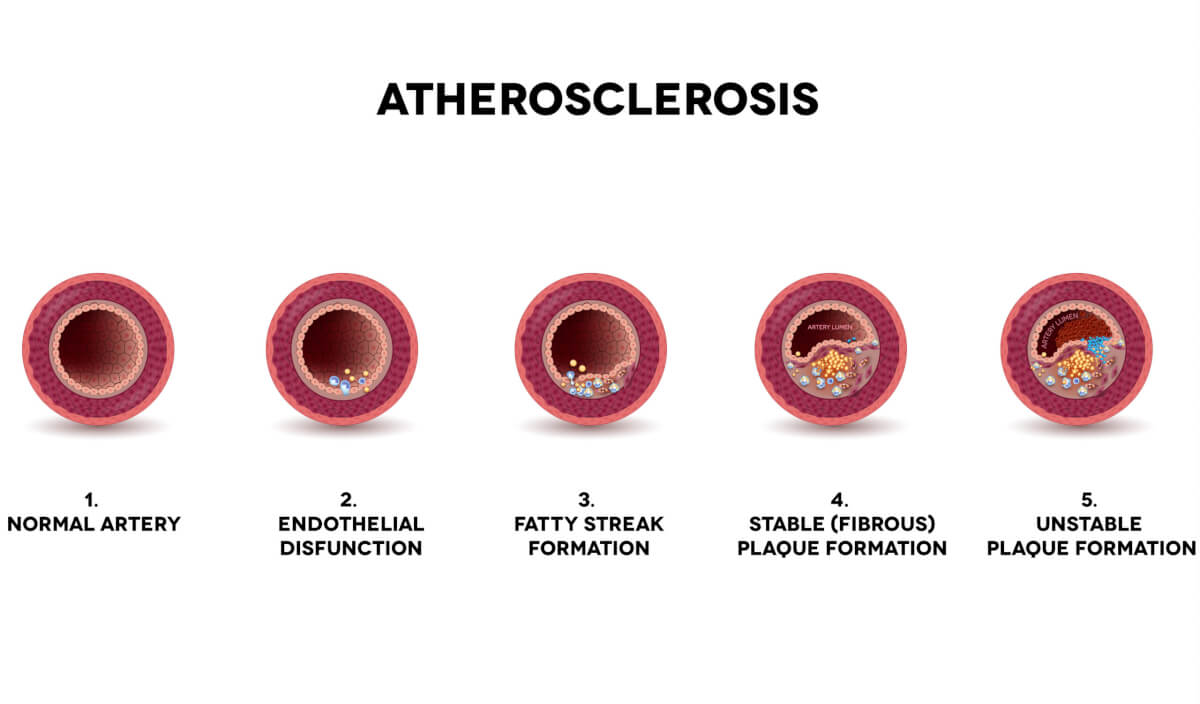LINKÖPING, Sweden — The past may be over, but is it ever really past? Researchers from Linköping University explain that how fit middle-aged men were during their youth appears to have a connection to their heart health today. More specifically, men who were in shape as adolescents showed a much lower risk of atherosclerosis close to 40 years later.
Atherosclerosis is the thickening of arteries, usually due to the buildup of plaque within the inner lining. The study, published in the British Journal of Sports Medicine, indicates that atherosclerosis is one of the key mechanisms driving the link between physical fitness and cardiovascular disease.
“Our results strengthen the notion that physical fitness is linked to health outcomes much later in life. The findings are worrying in the sense that there is a clear global trend indicating that young people are less fit now than when these study participants were young in the 1970s and 80s. Therefore, I believe that these findings may be even more important for those growing up now,” says Pontus Henriksson, senior associate professor in the Department of Health, Medicine and Caring Sciences at Linköping University, in a media release.

Prior studies have established that being in poor physical shape at a young age shows a link to an increased risk of cardiovascular disease later in life. However, the mechanism driving this relationship is not fully understood. Meanwhile, an important risk marker for future cardiovascular disease is the occurrence of atherosclerosis.
The international research team behind this latest study set out to investigate if physical fitness during adolescence is potentially linked to atherosclerosis much later on. If they could prove this, it would indicate that atherosclerosis is a likely mechanism in connection with the observed link to cardiovascular disease.

To conduct this project, researchers linked information provided by the Swedish Military Conscription Register to SCAPIS (the Swedish Cardiopulmonary Bioimage Study), a large population study focusing on heart and lung health among older individuals (ages 50 to 64). Among nearly 9,000 men, all of whom participated in SCAPIS, data on the individuals at conscription at age 18 from 1972 to 1987 was also available. Study authors stress one of the study’s biggest strengths was its basis on the general population, as well as participating men having been followed for a long period (38 years).
Then, the study authors analyzed their coronary arteries, which supply blood to the heart muscle, using coronary CT angiography (CCTA). This work is the first ever to utilize this state-of-the-art technology as a means of assessing plaques in the coronary arteries in connection with physical fitness at a young age. Additionally, the research team focused on two distinct types of plaques in the coronary arteries. Plaques with calcium have historically been the focus of earlier studies, as they tend to be easier to measure.
“We measured not only calcified plaques in the coronary arteries, but also non-calcified plaques, which are considered more problematic. They may be more likely to rupture, which can cause heart attacks, and have a worse prognosis,” says Ángel Herraiz-Adillo, a postdoc in the same research group.
“We see in our study that both good cardiorespiratory fitness and good muscle strength in youth are associated with a lower risk of atherosclerosis in the coronary arteries almost 40 years later,” adds Pontus Henriksson.
Study authors were also sure to analyze atherosclerosis in the large arteries from the heart all the way up to the brain via ultrasound. Since only males had mandated military service in Sweden at the time, study authors were only able to assess the association between fitness and atherosclerosis in men. Thus, more work is necessary to ascertain if similar associations are present in women.
